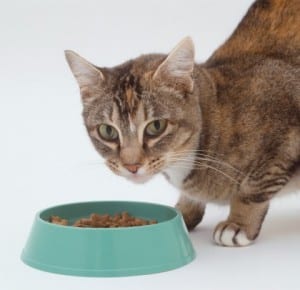Cats are curious and sometimes act in ways that can drive humans crazy. They don’t do it on purpose; being naughty just sort of happens. Here are answers to five frequently asked questions about cats.
Q: Why does my cat push things down from my shelves?
A: Cats are curious, and easily bored. Your cat probably wants something to do. Even if there’s a plethora of cat toys around the house, they might have grown old and boring, and your kitty might want something new. Take time to play with your cat, and invest in some fresh toys.
Q: Do cats wag their tails when they’re happy?
A: Cats aren’t like dogs, and they normally don’t wag their tails because they’re happy. On the contrary, a cat swishing their tail indicates agitation. They wag their tails if they’re annoyed or see something that doesn’t please them. Not the best time to pet the cat!
Q: If a cat sleeps on a person’s lap, does that mean they like the person?
A: Yes. Sleeping makes a cat vulnerable, and sleeping on your lap means that you are trusted. As a bonus, your lap is probably warm and comfortable.
Q: Do cats really have a great sense of direction?
A: Some cats do, and can find their way across amazing distances. Don’t rely on it. Keep a collar on your cat with a tag, and microchip your feline friend. The outdoors can be intriguing and overwhelming for indoor kitties getting out, and even the most experience outdoor cat can get into trouble.
Q: Why does my cat bite me?
A: Cats bite for a lot of reasons. It might be because of play aggression or over stimulation, but also a way of saying, “Stop that.” Think about what you’re doing when your cat bites you.



 Dogs can’t sweat. They pant to cool themselves off, but it’s not the most efficient system. Another risk for dogs is that they’re generally eager to please their owners and will not stop playing or even indicate that something is wrong until it is too late and heatstroke is a fact.
Dogs can’t sweat. They pant to cool themselves off, but it’s not the most efficient system. Another risk for dogs is that they’re generally eager to please their owners and will not stop playing or even indicate that something is wrong until it is too late and heatstroke is a fact. When a cat zips around the house in what appears to be total darkness to us, he or she probably sees pretty well. They can’t see in complete dark, but they see well with only a sixth of the light humans need.
When a cat zips around the house in what appears to be total darkness to us, he or she probably sees pretty well. They can’t see in complete dark, but they see well with only a sixth of the light humans need. Cats should not eat dog food. Dogs can eat cat food just fine, but cats should not eat dog food. Cats and dogs are more different than meets the eye, and they have vastly different nutritional needs.
Cats should not eat dog food. Dogs can eat cat food just fine, but cats should not eat dog food. Cats and dogs are more different than meets the eye, and they have vastly different nutritional needs.




